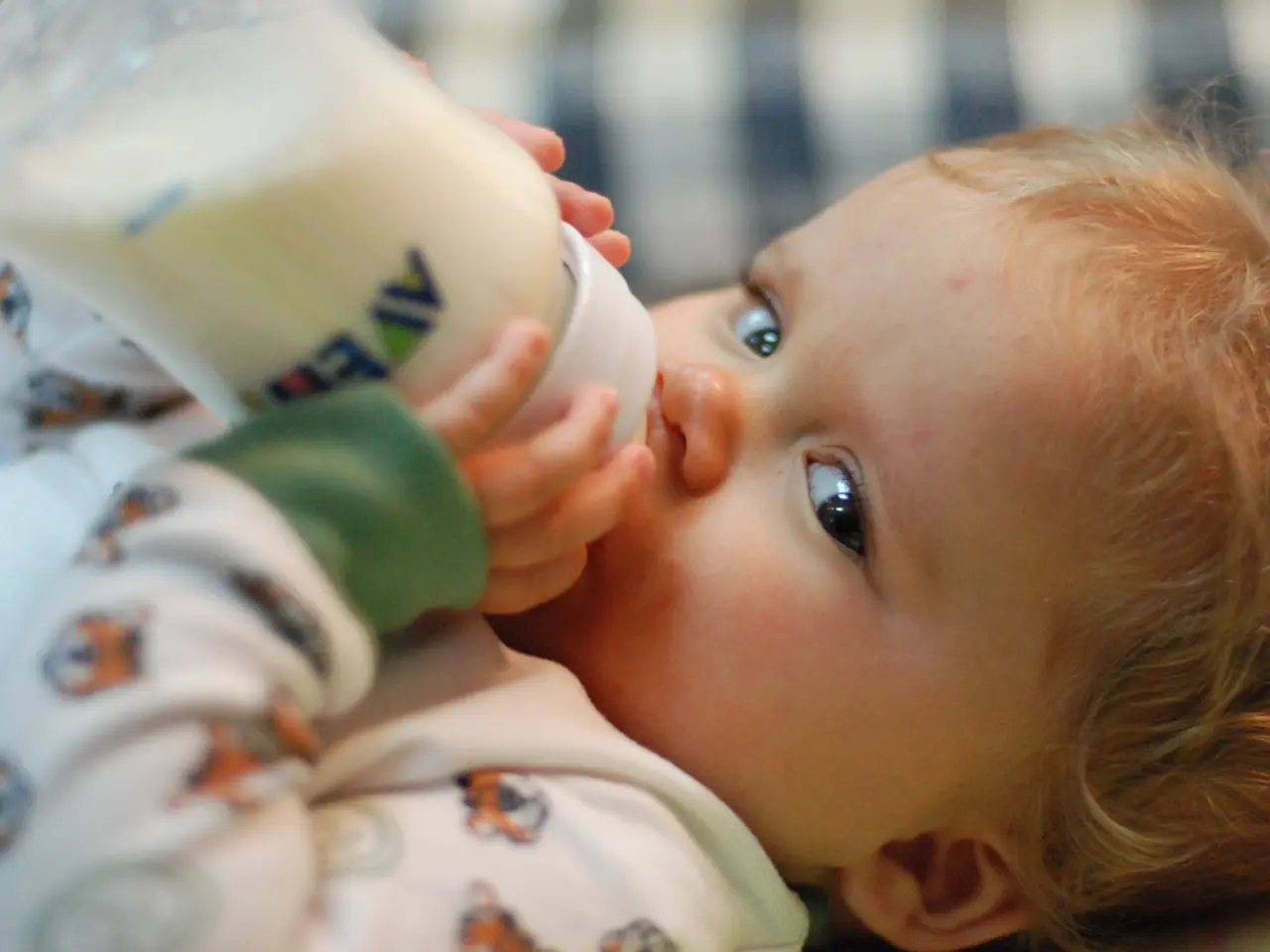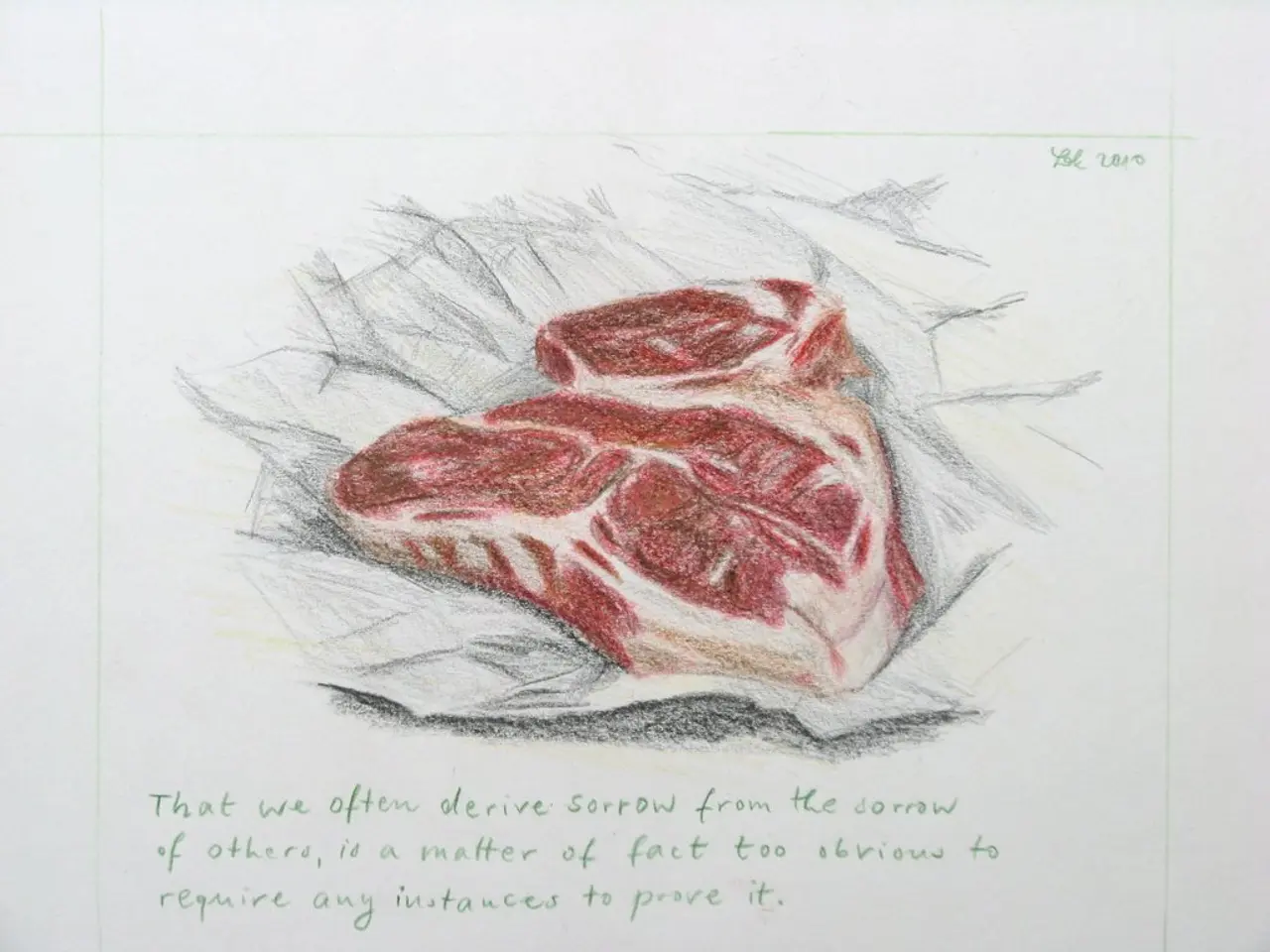Digestive Disorder in Infants: Root Causes, Identifying Signs, and Management Strategies
Colic, a common condition affecting young infants, is characterized by prolonged periods of crying, fussiness, and apparent abdominal discomfort. This condition, which typically occurs in the late afternoon or evening, can last for hours each day.
Common symptoms of colic include crying episodes, fussiness, gas and bloating, stiffness, and the baby appearing uncomfortable or irritable. While the exact cause of colic remains unknown, several factors are believed to contribute.
Swallowed air during feeding, food sensitivities, gastroesophageal reflux, stress, and overstimulation in the environment are thought to play a role in the development of colic. Overstimulation or stress can trigger episodes of colic, while swallowed air during feeding may lead to gas and discomfort. Food sensitivities, such as allergies to cow's milk protein, can also cause colic.
Fortunately, there are several home treatments that can help soothe an infant with colic. The "5 S's" – swaddling, shushing, side/stomach position, swinging, and sucking – have been found to be particularly effective. Swaddling helps the baby feel secure, while shushing mimics the womb environment. Holding the baby on their side or stomach can help them pass gas and feel more comfortable, and gently rocking the baby back and forth can provide additional comfort. Offering a pacifier or allowing the baby to suck on their thumb can also help calm them.
In addition to the "5 S's," motion and positioning can also be beneficial. Using a baby carrier or sling to keep the baby close and secure can help soothe them, and the "tummy-to-lap" or "super baby" position during tummy time can relieve pressure on the stomach.
Feeding adjustments can also help manage colic symptoms. If breastfeeding, removing dairy or other allergens from the mother's diet may alleviate symptoms related to food sensitivities. Ensuring proper latching and feeding techniques can reduce swallowed air, which can contribute to colic.
Warmth and comfort can also help soothe an infant with colic. Applying gentle heat to the baby's stomach with a warm compress or a warm bath can provide relief, and providing a calm, quiet environment can reduce overstimulation.
It is important to note that colic is neither dangerous nor harmful to the infant, and an infant with colic will gain weight and feed normally. Twice as many infants have colic if their mother smoked during pregnancy, and colic usually appears a few weeks after birth and lasts until the infant is about three to four months old.
While treatment for colic is not usually recommended to give medication, if concerned or finding it hard to cope, it is important to talk to your GP. Simethicone drops, an anti-foaming agent, can help reduce trapped wind in infants and potentially relieve abdominal pain. They are administered after each feed, usually in a 2.5 milliliter (ml) dose.
Lactase drops, which break down milk sugar lactose, may help some infants with colic. They are available for purchase online. Excluding cow's milk protein as a treatment for colic can involve a one-week trial of hypoallergenic formula for bottle-fed infants or a dairy-free diet for breastfeeding mothers.
In conclusion, colic is a common condition that affects many infants during their first few months. While the exact cause of colic is not well understood, several home treatments and feeding adjustments can help soothe an infant with colic and provide relief from their symptoms. It is important to remember that colic is neither dangerous nor harmful to the infant, and seeking help from a healthcare professional can provide additional support and guidance in managing colic symptoms.
- UC parents may find new home treatments useful for soothing their newborns with colic, such as the "5 S's" (swaddling, shushing, side/stomach position, swinging, and sucking).
- If a parent suspects food sensitivities, like cow's milk protein allergies, could be contributing to their child's asthma or colic, they may consider adjusting their diet accordingly, possibly eliminating dairy products.
- AQ, or a warm compress, applied gently to a newborn's stomach can provide relief from colic symptoms, along with a warm bath and a calm, quiet environment.
- HIV and mental health are not directly related to colic, but parenting during such challenging times can be stressful for some parents, so it's essential to prioritize mental health-and-wellness resources for support.
- In the science of health-and-wellness, understanding colic's causes is ongoing, but known factors include swallowed air during feeding, food sensitivities, and overstimulation in the environment.
- Adopting the "tummy-to-lap" or "super baby" position during tummy time can relieve pressure on a newborn's stomach, helping to manage colic symptoms.
- Simethicone drops can help reduce trapped wind in infants, potentially alleviating abdominal pain, while lactase drops and hypoallergenic formula for bottles or a dairy-free diet for breastfeeding mothers can be considered as treatment options for colic.




